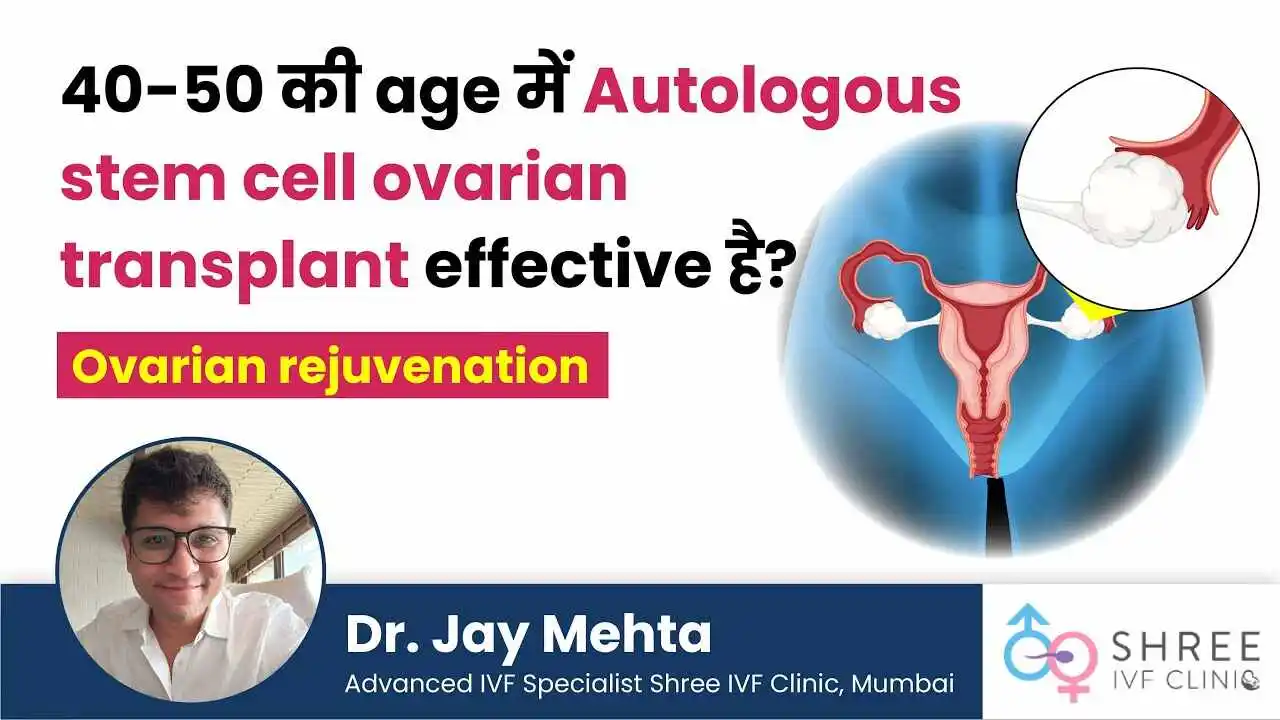Diagnostic Hysterolaparoscopy: Procedure & Role in evaluation of female infertility
UPDATED ON 24 DEC. 2021
AUTHOR

Dr Jay Mehta
Scientific Director & IVF Specialist with 10+ years of experience
TREATMENT
CONDITION
GET IN TOUCH ON
Diagnostic Hysterolaparoscopy is a testing procedure used to assess issues relating to infertility within the female reproductive systems. Laparoscopy is a surgical treatment that includes the implantation of a tiny fibre optical wire with a lens at the tip, referred to as the Laparoscope, into the womb.
This Laparoscope is introduced into one of the multiple incisions created by the surgeon during the surgery. Such a camera feed allows the surgeon to examine detailed pictures from within the womb on an outside screen, which the doctor uses to assess the disease. We connect these disorders to infertility; however, a uterine examination may uncover various problems.
Hysterolaparoscopy has been frequently used across the globe and has shown to be an efficient method in the detection and therapy of infertility.
Reasons of infertility
It offers far more thorough information about the state within the womb than some other imaging procedures, including ultrasonography or magnetic resonance imaging. Medical laparoscopy has been utilized to detect various problems that would be difficult to recognize without the extra information provided by therapeutic laparoscopy.
Below are a few of the problems that might be generating infertility, and thus diagnostic hysterolaparoscopy will detect:
Endometriosis
Endometriosis is a painful disorder in which a tissue that borders the interior of the womb grows outwards. Your doctor can readily diagnose this with a diagnostic hysteroscopy.
Fibroid of the uterus:
Uterine tumors originate from rings of smooth muscle fibers and fibrous connective tissue. These are generally innocuous, but they might produce fertility issues based on their thickness and placement. Diagnostic hysterolaparoscopy helps your physician to detect and identify bothersome fibroids so that we can extract them.
Adhesions:
Adhesions, also known as damaged tissue, are rings that can occur in the womb. In certain situations, they can also result in infertility. Using diagnostic hysterolaparoscopy, adhesions will be diagnosed and treated correctly.
Cysts in the ovaries:
Cysts rarely produce signs, but whenever they develop, diagnostic hysterolaparoscopy might locate them inside the womb and then treat them appropriately.
Ectopic pregnancy:
It is a dangerous disorder in that the embryo connects outside the womb rather than in the usual place. It may be identified with a hysterolaparoscopy.
Tubal permeability:
A clinical hysterolaparoscopy might be performed to determine whether both fallopian tunnels are open because blocked fallopian tubes prevent an egg from traveling to the womb and might be the reason for infertility.
Steps of this procedure
Diagnostic laparoscopy seems to be not a serious operation, but it necessitates sedating the person. It implies that the individual will be unconscious during the procedure.
The physician may give the patient instructions that must be closely followed before the surgery, such as avoiding ingesting any drinks or foods during the hours before the operation.
The following are the stages that may be taken for one’s diagnostic hysterolaparoscopy:
- When approaching the operation room, the individual must wear a medical gown and remove any personal belongings.
- The anesthesiologist will provide general anaesthesia to the patient after being on the examination table, rendering the patient asleep for the duration of the procedure.
- Before the treatment, an intravenous connection may be put through your arm and your wrist.
- A catheter might be put into your genital tract to gather urine during the treatment.
- A cut is done underneath the lower abdomen, and numerous more cuts around the belly might also be done. The exact position of the cut varies from person to person.
- Surgeons may place a cannula via another cut to inflate the belly with co2 gas in certain situations. This gas expands the area within the belly, providing the doctor greater room to operate into the womb and get a clearer picture. It also reduces the possibility of internal harm since the co2 gas pulls the abdominal muscles away from different inner organs.
- In terms of moving the parts into position, another device is placed via an alternative cut, and the surgeon should possess a better sight of the womb, fallopian canals, as well as ovaries.
- A specimen tissue has been often removed from the uterine lining to be tested in a laboratory underneath a microscope.
- To test the functional capacity of the cervix, womb, and fallopian tunnels, a solution is sometimes injected into the cervix, womb, and fallopian tubes.
- The surgical equipment and Laparoscope have been withdrawn from the belly after the uterus has been thoroughly examined.
- After the wounds are sewn and dressed, this may take many hours for the individual to get up then fully heal from the effects of the sedation.
Like any other procedure, diagnostic laparoscopy has its own set of risks. These are as follows.
- Infectious disease:
Microorganisms that penetrate the skin during the surgery may cause an infectious disease inside the belly. An infectious disease within the bladder is also possible.
- Scar tissue:
Scar tissue might form inside the belly.
- Hematomas:
This is described as a blood pool separate from the damaged blood arteries.
- Perforation of the uterus:
This might happen when any medical device utilized during the surgery causes harm to the womb and lining.

4,790+
379K+
Conclusion
Infertility may be frightening, and the measures and operations that a person may have to go through to combat infertility are considered psychologically, physically, and financially exhausting.
Diagnostic hysterolaparoscopy seems to be a straightforward procedure that, when conducted correctly, may provide your doctor with the data they require to establish a proper foundation for your reproductive therapy. The technique may provide critical facts to your surgeon, which may alter the course of your infertility therapy.
AUTHOR
Dr Jay Mehta
Scientific Director & IVF Specialist with 10+ years of experience
TREATMENT
CALL US 24/7 FOR ANY HELP
GET IN TOUCH ON
Share Article on
Recommended Reading
Best Sex Position to Get Pregnant Naturally
Best positions to get pregnant—try missionary or using pillows under your hips. Small changes can boost your chances of conceiving
Importance of the Fallopian Tubes in Fertility
Blocked fallopian tubes can prevent natural pregnancy. Understand their role and explore solutions for boosting your fertility
Ovarian Stem Cell Transplant (Age 40-50): Does It Work?
Stem cell ovarian transplant may help restore fertility and hormone levels in women 40-50, but its effectiveness remains under clinical research



